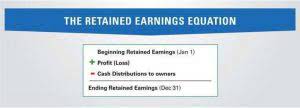
Continuous improvement, innovation, market trends, etc. in the market lead to the production of new and improved assets. It causes a reduction in the monetary value of assets which are currently being used. This whole process of an asset becoming out of date and losing its economic value is called Obsolescence.
- Inventory refers to the items that company sells to generate profit.
- You can improperly alter a company’s reported financial results by altering the timing of the actual dispositions.
- The valuation of the individual assets should correlate with these considerations.
- The journal entry is debiting allowance for obsolete inventory and credit inventory.
- A publishing company is an example of one that faces obsolescence risk.
When the asset was sold for $27,100, the accounting records would show $30,900 in depreciation (cost of $58,000 less the sales price of $27,100). However, depreciation is listed as $28,800 over the three-year period. Adding the loss of $2,100 to the total depreciation expense of $28,800 results in a cost of $30,900 for use of the asset rather than the $28,800 depreciation.
Please Sign in to set this content as a favorite.
In this case, the inventory is written off and the company takes a loss. Obsolescence is a notable reduction in the utility of an inventory item or fixed asset. The determination of obsolescence typically results in a write-down of the inventory item or asset to reflect its reduced value. Obsolescence can arise when there are less expensive alternatives in the marketplace, or when customer preferences change.
The journal entry removes the value of the obsolete inventory both from the allowance for obsolete inventory account and from the inventory account itself. When an expense account is debited, this identifies that the money spent on the inventory, now obsolete, is an expense. A contra asset account is reported on the balance sheet immediately below the asset account to which it relates, and it reduces the net reported value of the asset account.
Appropriate Reporting Treatment for the Write-Off of Inventory Due to Obsolescence
The inventory will remain on the company balance sheet for quite some time before reaching the expired date and becoming obsolete. By that time, we are sure about the total amount of obsolete inventory which should record as expense (cost). However, based on the accrual basis, the expense should be allocated over obsolescence in accounting time rather than recorded in only one specific period. Recall that Kenzie’s press has a depreciable base of $48,000 and an economic life of five years. If Kenzie sells the press at the end of the third year, the company would have taken three years of depreciation amounting to $28,800 ($9,600 × 3 years).